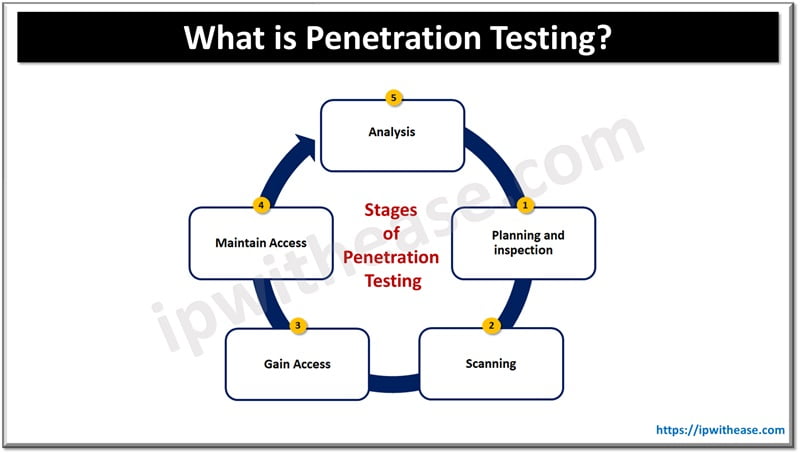In the fast-paced world of software development, ensuring that the end product meets the highest quality standards is non-negotiable. Software testing emerges as a cornerstone in this process, playing a pivotal role in guaranteeing that the software functions as intended and surpasses user expectations.
We are going to go over the importance of testing and help you understand why software testing is crucial to understanding the difference between good and bad software.
Introduction
Software testing very simply put refers to the systematic examination of a software application to identify and rectify any defects or errors. As the software development landscape evolves, the significance of thorough testing has grown exponentially. In this article, we will delve into the multifaceted importance of software testing in the creation of robust and reliable software. To make this easier you can always use software testing tools.
Ensuring Quality
Importance of Quality Software
Quality is the heartbeat of any successful software. Users demand applications that not only perform flawlessly but also provide a seamless and enjoyable experience. Software testing acts as the guardian of quality, ensuring that each line of code contributes to a superior product. Testing tests each line of code to understand if it will live up to expectations.
Role of Testing in Ensuring Quality
Testing, when integrated into the development process, becomes a proactive measure against potential issues. It acts as a gatekeeper, allowing only the most refined code to progress through the development pipeline, resulting in a final product that stands tall in terms of quality.
Impact on User Experience
The user experience is directly linked to the quality of the software. A thoroughly tested application guarantees a smooth and frustration-free interaction, fostering positive user sentiments and long-term loyalty.
Software Testing Framework
SO/IEC 29119-1 (2013): Concepts & Definitions
This is the core of other standards in this series as this helps you both understand and adopt other standards.
ISO/IEC 29119-2 (2013): Test Processes
This follows a risk management approach. It identifies the general process for software testing and can be used in any software development life cycle SDLC.
ISO/IEC 29119-3 (2013): Test Documentation
It emphasizes documentation giving you templates that are standardized and stable and run entire software testing cycle. These templates are to be customized depending on your requirements.
ISO/IEC 29119-4 (2015): Test Techniques
The standard defines strategies and techniques for organizations and SDLC models. It defines testing techniques for both structural and functional testing. Each technique gives you test conditions, test coverage and test cases.
ISO/IEC 29119-5 (2016): Keyword Driven Testing
The standard is for users to create keyword-driven tests and the creation of frameworks to build automations for testing around keywords.
Identifying Bugs and Defects
Detecting and Resolving Issues Early
One of the primary advantages of software testing is its ability to identify and address issues in the early stages of development. Detecting and resolving bugs during the coding phase minimizes the chances of encountering major problems post-release.
Types of Bugs
Software testing encompasses various types of bugs, ranging from simple syntax errors to complex logic flaws. Addressing these bugs systematically ensures a more stable and reliable software product.
Minimizing Post-Release Issues
When the new Apple titanium version released people were immediately disappointed with the product courtesy of too many software issues. Testing the software does away with it. Imagine getting critical issues once you release a new piece of software. Testing gives you a much needed safety net and reduces the odds of troubles later on. This enhances user experience.
The main goal with testing is to make sure that users don’t suffer from software bugs. The bugs are errors that cause unexpected behavior. Many bugs can be divided into different categories.
- Most low-impact bugs don’t cause any major problems
- High-impact bugs can impact functionality but still can allow the app to function.
- Critical bugs can destroy app functionality making using it impossible.
Software testers are the ones who look for these errors and try to determine their causes by conducting different tests, and with that knowledge, help developers resolve the issues.
Types of tests
The basic division of test types including functional and non-functional testing.
Functional testing focuses on business requirements for the app’s features that users can see and interact with. For instance, if the app responds correctly to a user’s input.
Function testing includes
- testing the unit,
- integration,
- end-to-end acceptance,
- regression, and
- sanity.
At the same time, non functional testing focuses on the app’s behavior and parts like specific functionality. It tests for workload and resistance to unauthorized access.
Throughout software development, many cases of software failure caused security issues. Software testing can provide functional applications and prevent damage.
How does testing help you?
Cost and time effectiveness:
Adding software testing in the early phases of development impact both expenses and timeline. Bugs detected earlier and faster to fix because as the complexity increases there are more hours. Less time on bugs means fewer hours and lower costs.
Contrary to misconceptions, investing in robust testing practices contributes to long-term cost-effectiveness. The expenses associated with fixing post-release issues far outweigh the investment in comprehensive testing during development.
The cost of fixing a bug post-release is significantly higher than addressing it during development. Software testing minimizes the chances of encountering expensive issues in the hands of end-users.
Considering the long-term perspective, thorough testing contributes to overall savings by ensuring that the software remains resilient and reliable, reducing the need for frequent updates and patches.
Within software development, testing plays a big role in assessing a program’s compatibility with specifications. Execute tests throughout the development of the software product to streamline risk management to deliver a quality product.
User satisfaction:
Did you in the past ever leave a site or app because of its bugs and that the interactions caused frustration. If you answer yes then you all have experienced sites that you were impossible to deal with. How such software tie to the user experience? Ensuring the software is functional by removing bugs before end users get it minimizes the likelihood of user dissatisfaction.
Company’s reputation:
Poorly working software negatively impacts brand image. Once users leave disappointment its hard to bring them back. Reliable software gives you a competitive advantage.
Users place their trust in software that consistently delivers a reliable and enjoyable experience. Thorough testing builds confidence among users, establishing trust in the software’s capabilities.
A single software glitch or failure can tarnish a company’s reputation. Testing becomes a shield, protecting the brand image by ensuring that the software aligns with user expectations.
Security:
Security is the most vulnerable element of the application. Critical bugs in sensitive software areas pose a serious threat to your application and users’ data leading to heavy losses and reputation damage. That is why ensuring that the chances of data leaks and other potential risks are lower should always be a top priority.
Enhance the development process:
If you catch problems and bugs during software development’s early stages itself that can make the process easier for you. Developers don’t need to struggle with things they really don’t have to. Testers can easily catch bugs and send that information to developers and this reduces the chances of further errors into the future.
Software Quality:
The ultimate goal with any software project is to create a high-end program that comes with great designs and UI and ensures everything works well. The only way to do this is to conduct proper tests. Software testing almost guarantees application functions well and meets all said requirements.
Compliance with industry standards:
In industries such as banking or healthcare, which handle sensitive data, strict standards must be adhered to by all software. Security, data management, and web accessibility are just a few key areas that require special attention. Testers play a crucial role in ensuring that the software fulfills these standards, thereby reducing legal risks and safeguarding user data.
In industries governed by strict regulations, adherence to compliance standards is non-negotiable. Software testing ensures that the developed software complies with industry-specific regulations, avoiding legal complications.
Ultimately, security breaches can have catastrophic consequences. Testing identifies vulnerabilities, ensuring that the software protects sensitive information and guards against potential cyber threats.
Conclusion
What do you think of the different aspects of software testing and its importance in helping you differentiate between good and bad software as well as create good software?
Continue Reading:
Techniques for Load Testing & Performance Testing in Non-Functional Testing
Top 5 Software Development Tools
ABOUT THE AUTHOR
IPwithease is aimed at sharing knowledge across varied domains like Network, Security, Virtualization, Software, Wireless, etc.



